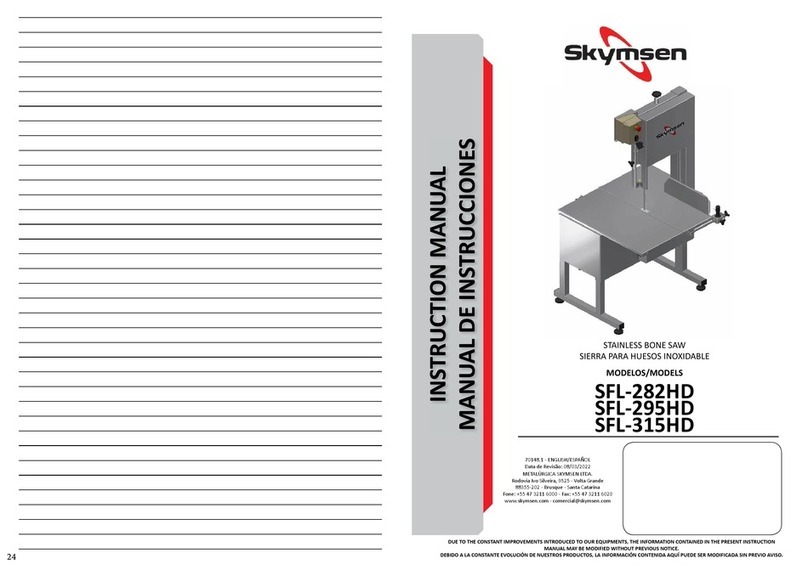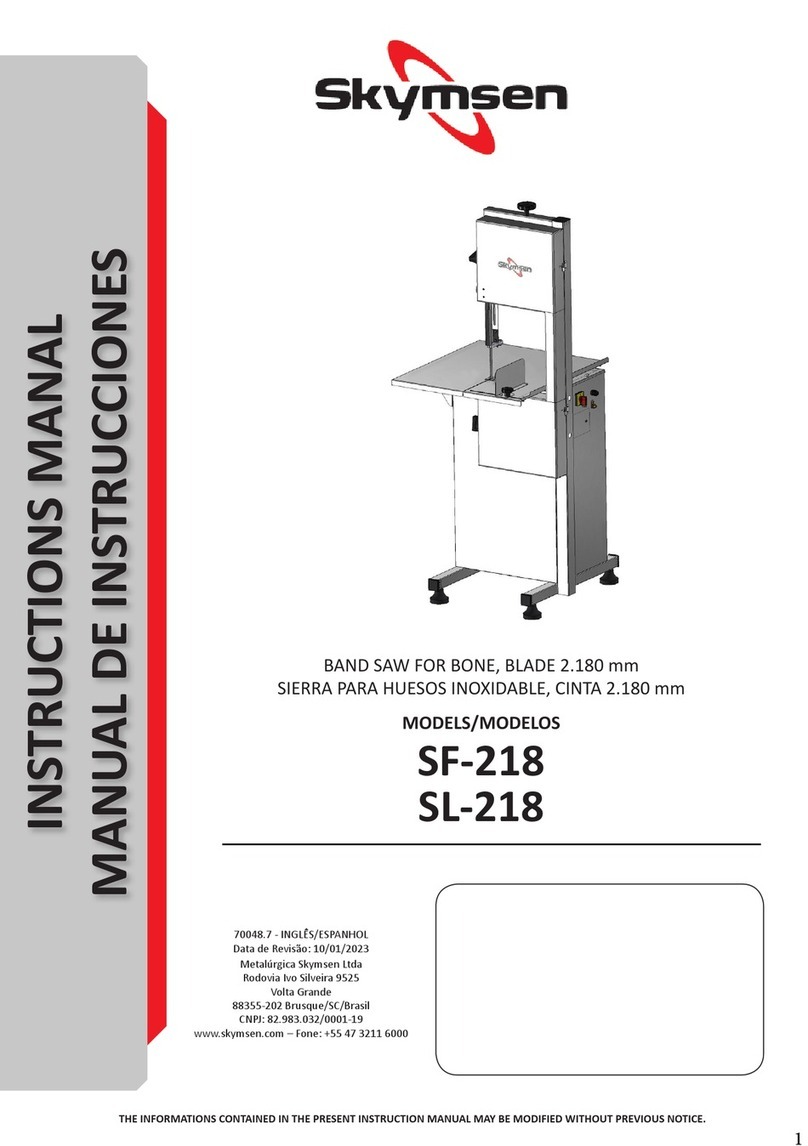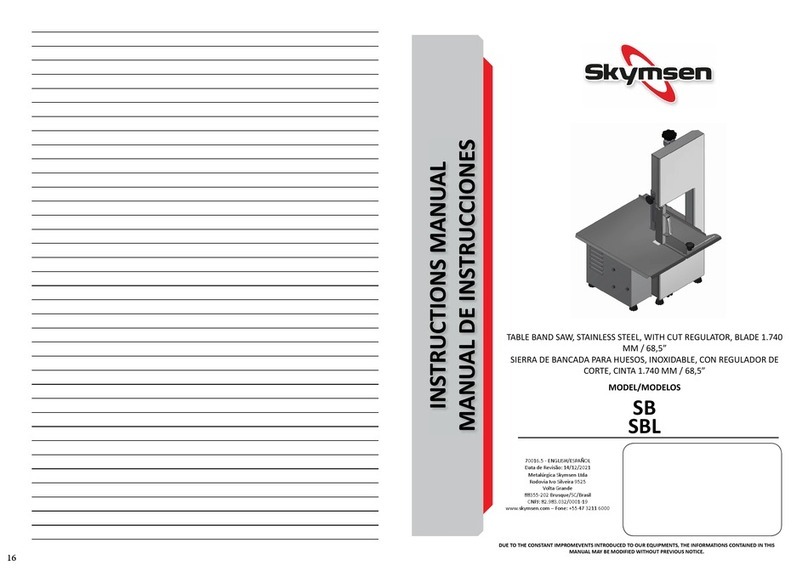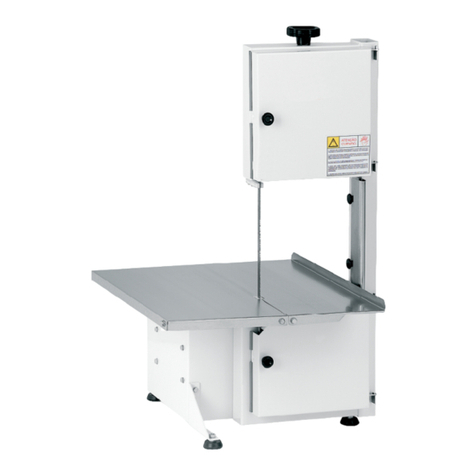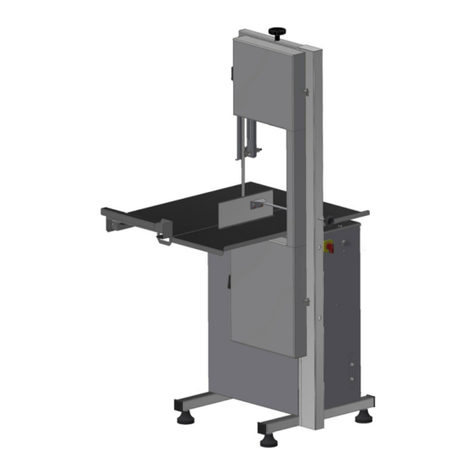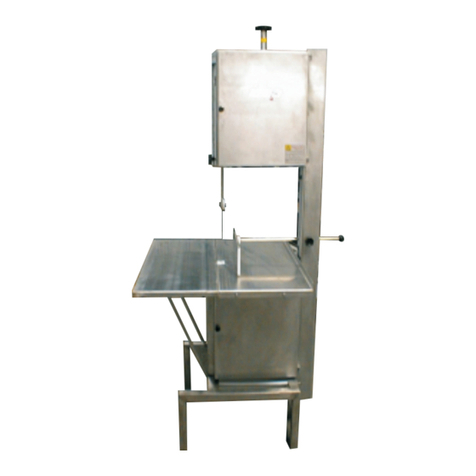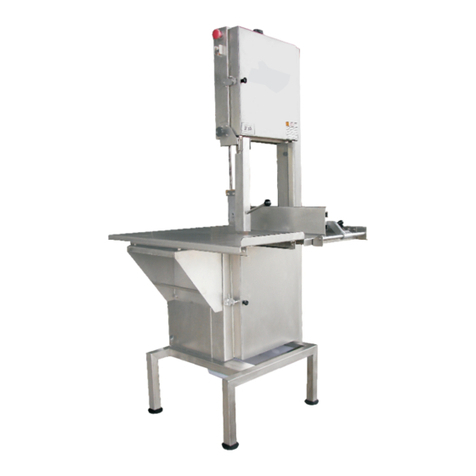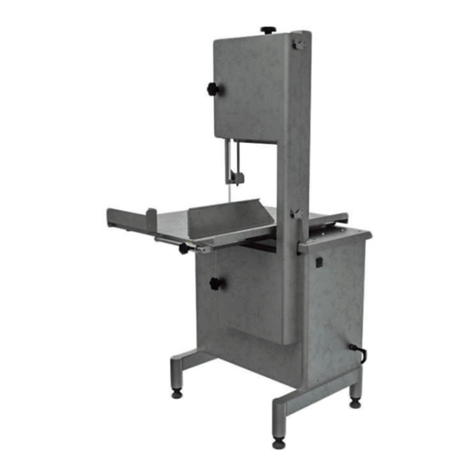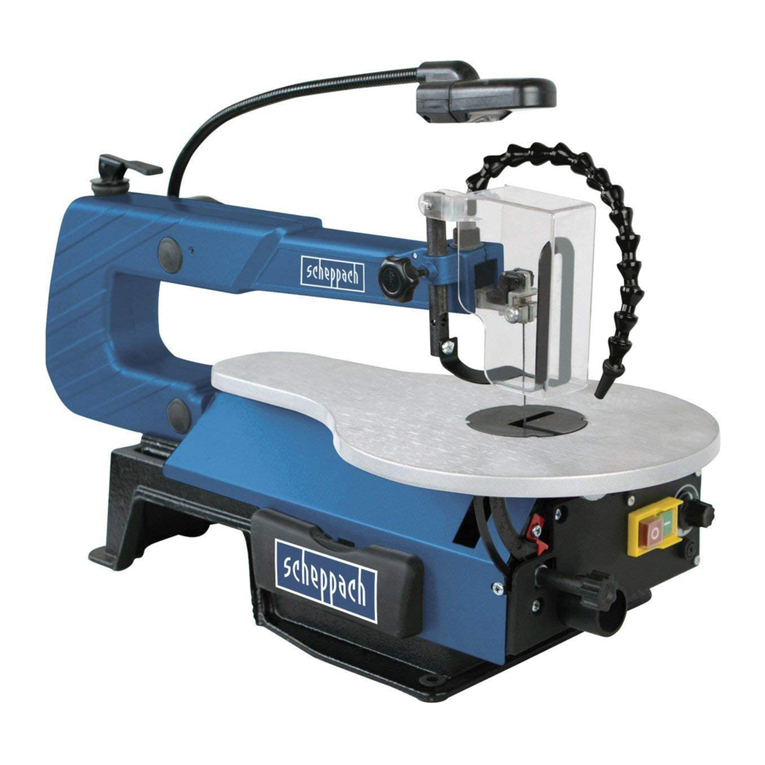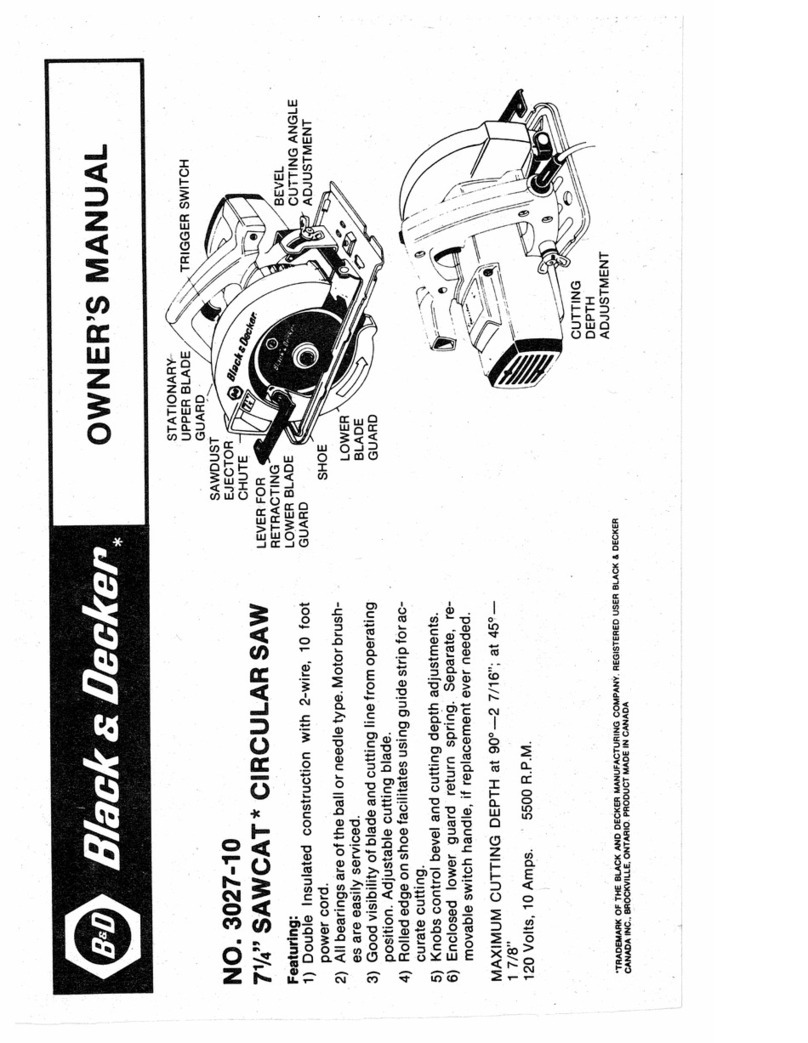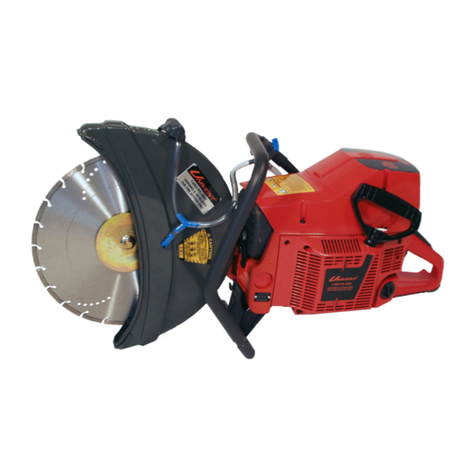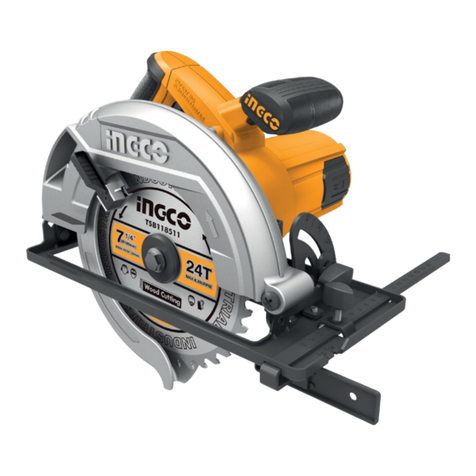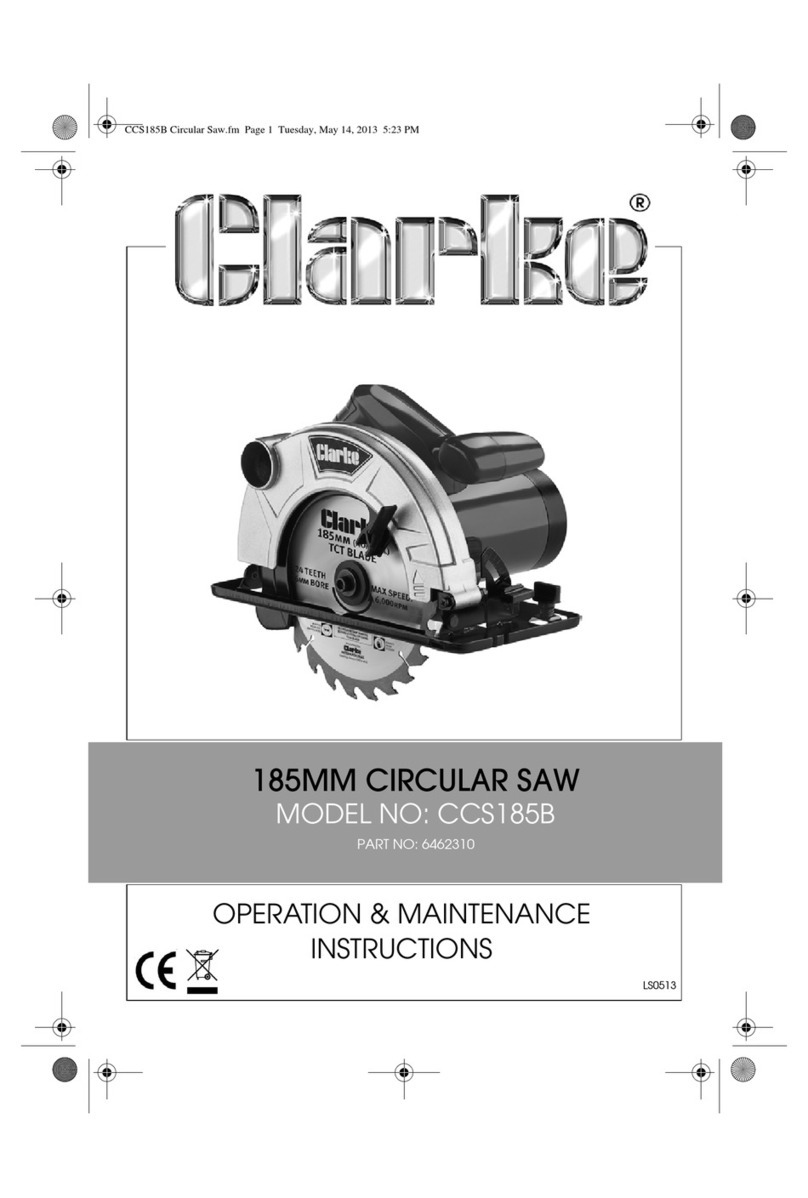
3
1. Introducon
1.1Safety
This equipment is potenally dangerous when used improperly. It is necessary to perform
maintenance, cleaning and/or any service by a qualied person and with the equipment
disconnected from the electrical network.
The instrucons below should be followed to avoid injury:
1.1.1 read all instrucons.
1.1.2 to protect against risk of electrical shock and equipment damage, never use the same
with clothes or feet wet and damp or wet surface or immerse in water or any other liquid,
or use water jet directly on the machine.
1.1.3 should always be supervised when using any equipment, especially when it is being
used near children.
1.1.4 remove the plug from the socket when not in use, before cleaning or inserng or
removing aachments, when in maintenance, or any other type of service.
1.1.5 keep hands away from moving parts.
1.1.6 If your appliance is not funconing properly or when this suer a fall or has been
damaged in any way, take it to nearest technical assistance to review, repair, electric or
mechanical adjustment.
1.1.7 the use of accessory aachments not recommended by the appliance manufacturer
may result in personal injury.
1.1.8 keep hands and any utensil away from moving parts of the appliance while it is
running to prevent personal injury or damage to equipment.
1.1.9 Never wear with wide sleeves, especially on the wrists during the operaon.
1.1.10 verify the voltage of the unit and the mains are the same, and that the machine is
properly connected to Earth.
1.1.11 steel wear gloves during the cung operaon.
1.1.12 this product was developed for use in commercial kitchens. Is used, for example, in
restaurants, canteens, hospitals, bakeries, butchers and similar.
The use of this equipment is not recommended when:
-The producon process is connuously on an industrial scale;
-The workplace is an environment with corrosive atmosphere, explosive, contaminated
with steam, dust or gas.
